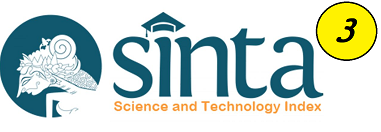Analysis of Spatio-temporal PM2.5 and CO2 Concentrations Distribution with PSCF in the Greater Bandung Air Basin
DOI:
https://doi.org/10.25124/jmecs.v10i1.6003Keywords:
backward trajectory, CO2, Low-cost sensor, PM2.5, PSCFAbstract
The limitations of expensive main monitoring stations can be addressed by using low-cost sensor-based measuring stations. A low-cost sensor-based air quality monitoring system has been implemented in Telkom University, BRIN Pasteur, and BRIN Taman Sari areas to measure PM2.5 and CO2 concentration in Bandung vertically and horizontally. Vertically, the CO2 concentration at the highest measuring station is indirectly affected by local activities. However, PM2.5 concentration is still influenced by local actions. Horizontally, using the independent T-test and ANOVA, PM2.5 concentrations tended to be homogeneous regarding the significance values in the four periods, namely 0.916, 0.03, 0.727, and 0.047. Meanwhile, the concentration of CO2 at each station tends to be heterogeneous along significance values of 0.646, 0.03, 0.02, and 0.01. The vertical and horizontal analysis shows that CO2 concentrations tend to be heterogeneous due to differences in altitude and spatial characteristics of the measurement sites. Meanwhile, PM2.5 tends to be more homogeneous by having the same pattern at different heights and spatial locations. The long-distance potential sources of PM2.5 are estimated to come from the Indian Ocean and Cirebon region because they have the highest PSCF and CWT values, 0.5-0.7 and 55-65 µg/m3.

















